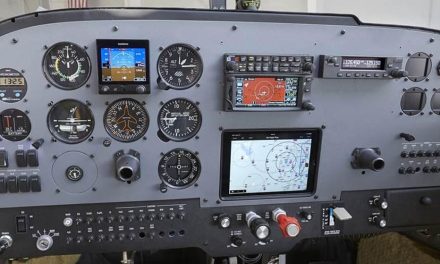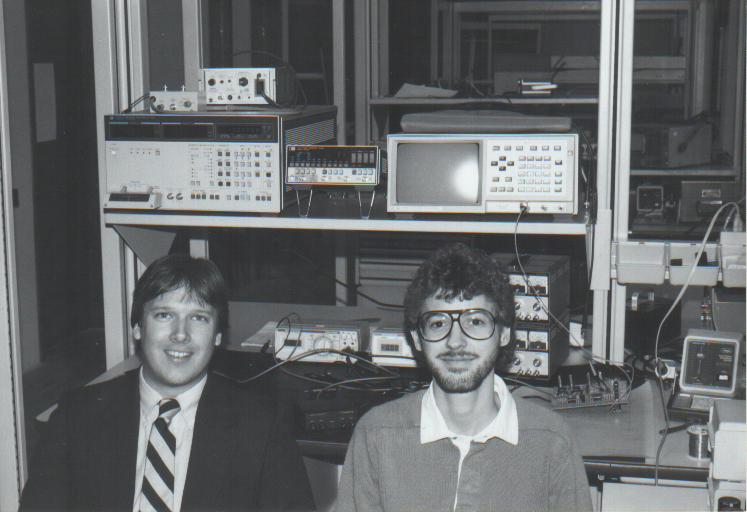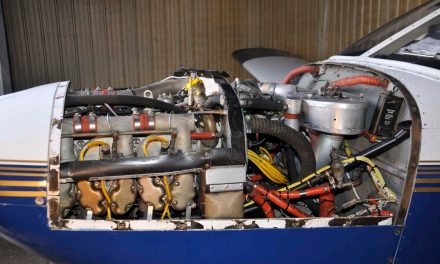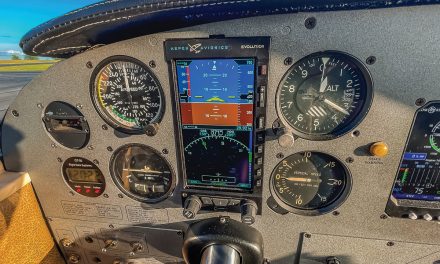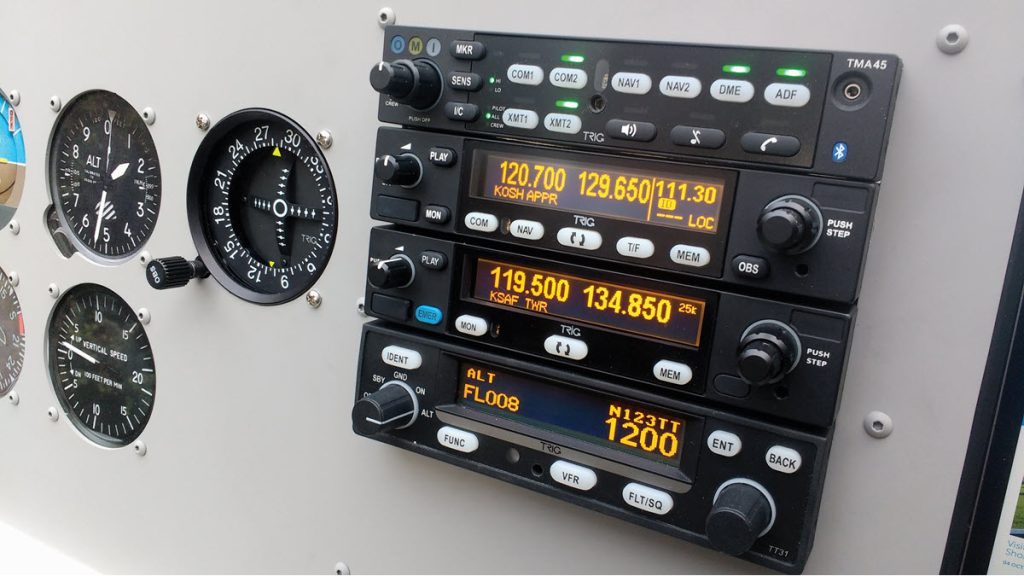
The TX56/TX57 Nav/Com
They say that time goes by fast when you’re having fun. I have news for you, fun or not, time flies. I first covered Trig Avionics in our September 2016 issue and frankly, I’m surprised it has been that long. Since then, when I point my clients to Trig, I usually referred to them as “an up-and-coming avionics manufacturer from Europe.” I can’t say that anymore. Trig has had dealers in the U.S. for 12 years, and now they can offer you a full product line designed by pilots for the everyday legacy aircraft owner! In 2016, we focused on Trig’s TT31 Mode S transponder, which was the first Mode S ES transponder certified by the FAA in the U.S. — quite an accomplishment from a company considerably smaller than the likes of a Garmin, an Avidyne, or a Bendix King. Today, we want to talk about Trig’s new TX56/TX57 Nav/Com and their new Stack Bundle, but let’s start with a little background on the company.
Trig Avionics Limited
Trig Avionics Limited got its start in 2004 with an initial focus on a single problem and its solution. While U.S. pilots and aircraft owners in 2004 were focused on Wide Area Augmentation System (WAAS) GPS and new multifunction display products, the European market was dealing with a problem. The problem was too many aircraft in too small an airspace. While it is safe to say that there are more aircraft in the skies over the U.S., the issue in Europe (especially Western Europe) was aviation congestion. Western Europe is not much bigger than Texas and contains about 30 of the busiest airports in the world. In the late 1990s, it became obvious to European Civil Aviation authorities that they had a problem with congestion and the problem was getting worse.
In fact, the European aviation community had two problems: the first was communication frequencies and the second was the massive and expanding chore of traffic separation. Like the U.S., Europe expanded its aviation frequencies to 760 channels in the 1990s but this, too, soon proved to be inadequate. In 1999, Europe decided to split the aviation communication band into thirds, creating 8.33 kHz spacing and 2,280 channels. The second problem in Europe was aircraft separation. It was decided that the existing mode A/C transponders in use all around the world were simply not getting the job done anymore in Europe. Thus began the move to Mode S transponders and the emergence of Trig Avionics.
Trig Avionics recognized the lack of Mode S solutions available in Europe and set out to be one of the first to meet this new demand. In fact, when Andy Davis, CEO of Trig (an entrepreneur and pilot) founded the company in 2004, the first mission was to produce an affordable solid-state Mode S transponder to meet this new need. Very few options existed at the time, and it should be noted that U.S. manufacturers were slow to respond, especially for the GA market. As a result, a new generation of transponders was born to meet the European requirement and the Trig TT31, targeting the GA market, set a new standard for quality, capability, and value. Today, Trig offers a full avionics stack, from audio control through Mode S. We will revisit the TT31, but let’s start with a look at the nav/comm market and Trig’s new nav/comm.
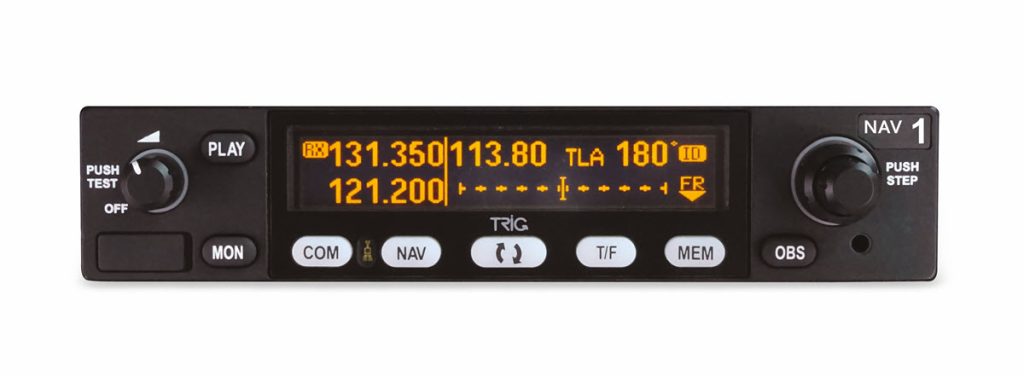
The Nav/Comm Market
Twenty-five years ago, the nav/comm was king and there were many options. You flew IFR with one instrument landing system (ILS) equipped nav/comm (or two) and a second with VHF omni-directional range (VOR) and often a Distance Measuring Equipment (DME) that provided range. GPS, at first, augmented VOR/ILS, then what I call first-generation IFR GPS units, lacking any real mapping, made enroute navigation better and more efficient. There were few IFR GPS approaches. The Garmin GNS 430 came along in 1998 and changed the equation. Once GPS became the standard, pilots, including me, envisioned the end of the VOR/ILS system as we knew it. But that never happened and a few years ago, the FAA, recognizing that the GPS would need a backup, established the concept of VORMON (VOR Minimum Operational Network) and made the commitment to support the VOR system for another 25 years. Nav/comm options today are very limited. TKM has been there (for 35 years) to provide new, slide-in replacements for older, legacy nav/comm models, but if you wanted a new nav/comm for a new installation, you were limited to Garmin’s GNC 255 and VAL’s 2000 comm and nav package. Rumor is that Avidyne was working on a nav/comm, but we haven’t seen that yet. TKM’s replacement for the venerable KX 155 hasn’t made it to market, either. The Trig TX56/TX57 is the first new nav/comm that we have seen in years.
Trig TX56 and TX57 Nav/Com
I’ve been aware that the TX56/TX57 was in the works for about three years. The fact is, with COVID-19, staffing challenges, and supply chain issues, we have not seen much in the form of new products from any manufacturer recently. This is really hard on an avionics writer who needs to have a new article done every 30 days! There was always something new to talk about. Well, good! We can talk about Trig!
The Trig TX56/TX57 is a fully digital, modern nav/comm with ILS. The day of the nav/comm with VOR only is gone. UPSAT started this with their popular SL30 introduced in 1999, available as an ILS version only. Garmin did not have a nav/comm until they acquired UPSAT in 2003 and they relabeled the SL30 as a Garmin product until the GNC 255 replaced it in 2012. The GNC 255 is 10 years old. The new Trig TX56/TX57 comes in four versions:
The rest of this article can be seen only by paid members who are logged in.Have a website login already? Log in and start reading now.
Never created a website login before? Find your Customer Number (it’s on your mailing label) and register here.
JOIN HERE
Still have questions? Contact us here.

